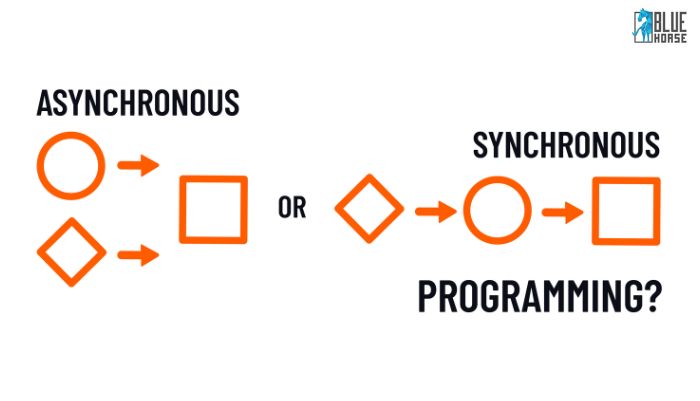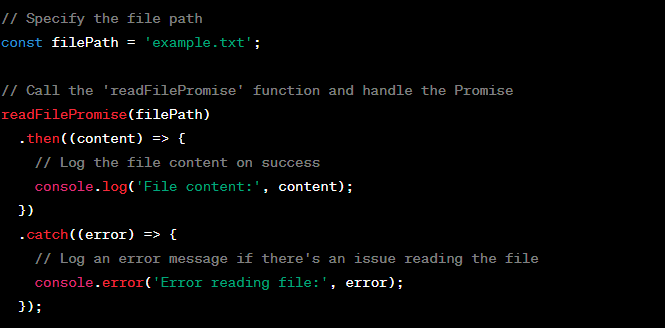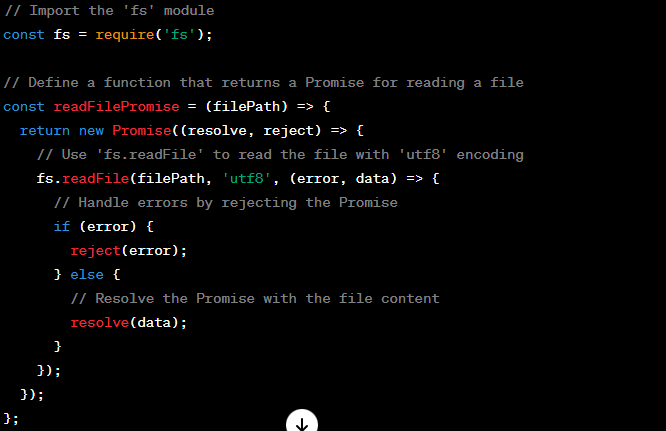Mastering Asynchronous Programming in Node.js: A Comprehensive Guide to Callbacks, Promises, and Async/Await

Understanding Node.js Event-Driven Architecture
Node.js is celebrated for its distinctive non-blocking, event-driven architecture, paving the way for effective asynchronous programming. A profound grasp of asynchronous operations is paramount for crafting high-performance Node.js applications.
Exploring Asynchronous Programming in Node.js
Dive into the realm of Node.js asynchronous programming, unraveling the significance of callbacks, promises, and async/await. Learn how these powerful concepts can efficiently handle asynchronous tasks, ensuring optimal performance in your Node.js applications.
Comparing Synchronous and Asynchronous Programming Models
Synchronous Programming Model
In a synchronous model, actions unfold sequentially. When initiating a function with a prolonged task, the program pauses until the action concludes and delivers the result. This synchronous approach introduces potential delays to the entire program.
Asynchronous Programming Model
Contrastingly, an asynchronous model permits concurrent actions. Initiating an action does not impede the entire program; instead, it continues its execution. Once the action concludes, the program is promptly notified, gaining access to the achieved result, such as data read from disk.
Understanding Node.js Callback Function
In the realm of Node.js, a callback function plays a pivotal role as an asynchronous counterpart invoked upon task completion. This mechanism mitigates blocking, enabling concurrent code execution. Node.js leverages callbacks to achieve scalability, efficiently handling an extensive volume of requests. Delve into the intricacies of callbacks through a scenario where file reading initiates in Node.js.
Node.js Event-Driven Architecture
Node.js is renowned for its event-driven architecture, a cornerstone for effective asynchronous programming. Uncover the intricacies of how Node.js leverages this architecture, providing a non-blocking environment that enables concurrent actions. This key feature enhances the scalability and performance of Node.js applications.
File I/O with Promises in Node.js
Exploring the asynchronous world of Node.js, discover how Promises elevate File I/O operations. Promises, as objects representing the eventual completion or failure of an asynchronous operation, offer a structured approach to handling file-related tasks. Gain insights into handling File I/O efficiently through the lens of Promises in Node.js. Example: Now let us see the asynchronous callback function example.

In this context, we introduce the setTimeout function, a fundamental asynchronous API provided by Node.js. setTimeout operates with two essential arguments: the callback function and the specified delay in milliseconds. As the program unfolds, the setTimeout function is invoked, initiating a 4-second delay. Crucially, the program does not halt its execution for the completion of setTimeout; instead, it seamlessly progresses to the subsequent operation, marked by the console.log() message following the setTimeout function. Upon the expiration of the designated delay, the setTimeout function strategically places the callback function into the callback queue, ready for subsequent processing. This mechanism exemplifies Node.js's efficient handling of asynchronous operations, ensuring the seamless flow of code execution.
Promises in Node.js

Promises, within the context of Node.js, serve as objects designed to encapsulate the eventual outcome—whether successful completion or failure—of an asynchronous operation. This concept introduces a more organized and structured methodology for managing asynchronous code, distinguishing itself from the conventional callback functions.
States of Promises Promises navigate through three distinct states during their lifecycle, each indicative of the ongoing progress of the asynchronous operation:
Pending State
- Description: The initial state upon the creation of the promise.
- Characteristic: Signifies that the asynchronous operation is currently in progress.
Fulfilled State
Description: The state achieved when the asynchronous operation successfully completes. Characteristic: Indicates that the operation has concluded, and a tangible result is now available.
Rejected State
Description: The state encountered when the asynchronous operation encounters an error or fails. Characteristic: Marks the presence of an issue or failure during the execution of the operation.
Example: Simulating Asynchronous File Reading with Promises in Node.js


Simplifying Code in Node.js with Async/Await
In the realm of JavaScript, the ECMAScript 2017 edition introduced a game-changing feature known as Async/Await in 2017. This addition aimed to provide a more streamlined and cleaner approach to writing promises, offering enhanced simplicity in code.Embracing the power of async/await in Node.js involves a straightforward process. Simply prefixing any regular function with the keyword 'async' instantly transforms it into a promise. This elegant solution is often referred to as syntactic sugar for promises. Breaking Down the Async/Await Approach To bypass the conventional chaining of then() methods in promises, the async/await approach comes to the rescue. Despite the internal usage of chaining, the syntax brings a refreshing clarity to asynchronous code. Example: Node.js Async/Await Implementation Let's delve into a practical example to illustrate the usage of the node.js async function:

This snippet showcases the readability advantages of async/await over traditional promises in Node.js. Note the absence of a catch() method; instead, error handling is gracefully managed through a try-catch block.
Conclusion: Navigating the Asynchronous Realm in Node.js
Embark on a journey through Node.js's asynchronous landscape, understanding callbacks, promises, and async/await. From comparing synchronous and asynchronous models to exploring callback functions, Promises, and File I/O, we've uncovered the power of Node.js. The Async/Await feature brings simplicity, demonstrated in a practical example. With a solid grasp of these concepts, developers can craft high-performance applications. Mastering asynchronous programming in Node.js is a gateway to robust development—apply these principles and elevate your projects to new heights!




















